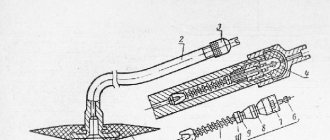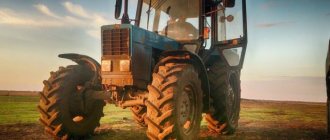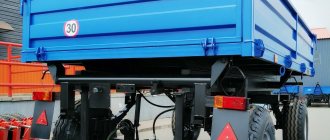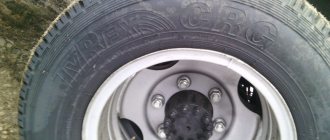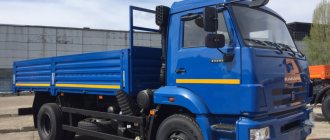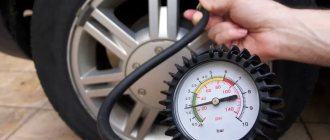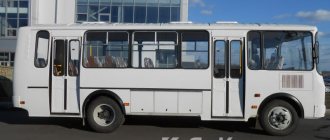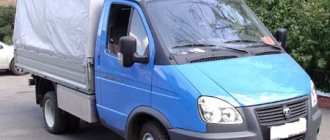With the development of the line of vehicle models of the Minsk Tractor Plant, the improvement of the driving and traction qualities of manufactured tractors, the disks and rims of the wheels have different designs and sizes, taking into account: the type of installed drive axles, the current loads on the axles, the tire sizes used, the possibility of adjusting the tractor track width and the need for doubling running wheels. The material talks about the types of front and rear wheel disks for popular brands of tractors in Belarus.
How much does a tractor tire weigh?
To calculate the cost of sending a tire to other regions of Russia, transport companies often require the weight and volume of the goods that you are going to send. On this page you can find out the weight of tires, as well as their volume for most existing sizes (standard sizes).
- All tire weight data in the table are approximate values, since the same tire sizes from different manufacturers can weigh differently!
- Tires with runflat technology weigh up to one and a half times more, depending on the manufacturer and the specific model.
The weight of winter tires, as a rule, is slightly more than summer tires (due to higher tread blocks), but this difference is not very significant.
To determine the weight and volume of rims, you can use the page: “Weight of rims.” To calculate the external dimensions of a tire (wheel), you can use a tire calculator.
The T-130 crawler tractor is a prominent representative of the USSR industry. It was produced from 1969 to 1988. Acceleration and increase in industrial processes, development of virgin lands, construction, laying of communications on the scale of a huge country was the only possible with large-scale automation of manual labor. The history of the T-130 tractor begins in 1929, when the need for high-power equipment arose in the young state.
They did not start developing their own technology. They took advantage of the American Depression and invited engineers to set up Soviet industry. The American Caterpillar-60 was taken as the basis; its first Soviet analogue, released in 1933, was the Stalinets-60. The T-100M was designed on the basis of this model. Subsequently, it was transformed into a model line of tractors. The power of the T-130 tractor was 130 hp, and later increased to 160 and 180 hp. The T-130 tractor is still considered a universal model, the technical characteristics of which best combine price and quality.
Types of wheel rims for Belarus tractors
In addition to the distinctive size of the circumference and width of the rim in relation to the corresponding tire size and brand of tractor, the location of their installation on the front or rear axles, the discs are divided according to their design:
- welded - with a constant offset, that is, the disc and rim are welded
- discs with variable offset, where the wheel disc is attached to the rim on brackets and can, if necessary, be rearranged relative to the center of the rim axis
- additional rims are produced for doubling the running wheels of energy-saturated brands of tractors in the corresponding size of the used disk
front wheel MTZ 82 assembled with a welded disk
rear wheel MTZ 82
Front wheel MTZ 82 with variable offset
The offset in the characteristics is designated as ET, where the value indicates the displacement distance of the wheel hub flange mounting plane relative to the center of the rim rotation axis. This parameter is especially important for row-crop tractors, where it is necessary to form a tractor track of a certain width in accordance with the agrotechnical requirements of the cultivated crop.
Wheel parameters
Also, when choosing a disk, you need to specify the number of mounting holes and their location relative to the center of the plane of connection with the hub flange. And also the very diameter of the central hole for the hub, just like a number of wheel rims, having the same markings and tire seat parameters, may differ in these parameters depending on the tractor model.
Table of front wheel disks for Belarus tractors
| Tractor brand | Disc labeling | Brands of tires used |
| MTZ 320 (T-25,30,16) | 4.5Ex16 | 7.50-16, 6.50-16, 5.50-16, 6.00-16 |
| MTZ 80, 510, 520, 530, 570, 900, 1005 | 5.50Fx20 | 7.5-20, 9.00R20, 9.00-20 |
| MTZ 320 | 6.00Fx16 | 9.00-16, 10.00-16, 210/80R16, 7.50L-16, 185/75R16 |
| MTZ 80, 100 (YUMZ-6) | W7x20 | 9.00R20, 11.2-20 |
| MTZ 82.1 510, 520, 570, 512, 522, 532, 572, 592, 820, 892, 920, 952 | W9x20 | 11.2-20 |
| MTZ 892, 920, 95, 1025, 81.2, 82U, 82R | W12x20 | 13.6-20, 16.0-20, 13.6R20 |
| MTZ 1021, 1221 | W10x24 with variable offset | 11.2-24, 12.4-24 |
| MTZ 82, 952.2, 822, 923, 1021, 1025, 1221, 1222, 1522, 1523, 1822, 2022 | W12x24 with variable offset | 13.6R24, 380/70R24, 420/70R24, 14.9R24, 360/70R24 |
| MTZ 3022 | W12x24 | 540/65R30 |
| MTZ 3522 | DW18Lx34 | 600/65R34, 20.8R34 |
Table of rear wheel rims for Belarus tractors
| Tractor brand | Disc labeling | Brands of tires used |
| MTZ 320 | W8x16 | 12.0-16, 11.2-16 |
| MTZ 921 | DW12x30 | 14.9R30 |
| MTZ 80, 82, 822, 538, 900,921 | DW14Lx30 | 16.9R30, 18.4R30, 18.4L-30, 480/70R30, 18.4/78-30 |
| MTZ 2522 | W15Lx30 | 16.9R30, 18.4R30, 480/70R30, 540/65R30 |
| MTZ 2822, 3022 | W15Lx30 double rim | |
| MTZ 82, 920, 922, 952, 1021, 1025 | DW16LX34 | 480/70R34, 18.4R34 |
| MTZ 50, 52, 80, 82, 100, 102.822, 892, 952.1021,1025 (YuMZ-6) | DW14Lx38 | 480/70R38, 16.9R38, 15.5R38 |
| MTZ 80, 82, 100,102,892, 952, 1025,1021,1321,1522 | DW15Lx38 | 18.4R38, 16.9R38, 520/70R38, 480/70R38, 460/85R38 |
| MTZ 1523 | DW16Lx38 | 18.4R38, 520/70R38 |
| MTZ 80, 82, 1221, 1321 (LTZ 155) | W8x42 | 9.5-42, 11.2R42 |
| MTZ 2022, 2822, 3022 | DD18Lx42 | 20.8R42, 580/70R42, 650/65R42 |
| MTZ 2522, 3022 | DD18Lx42 double rim | |
| MTZ 3522 | DW23Вx42 | 710/70R42 |
Tractor device
The power transmission of the DT-75 tractor consists of a main clutch, a torque multiplier (TMC), a connecting (cardan) transmission, a gearbox and a rear axle. All these elements are mounted in one cast housing. The rear axle of the tractor, in turn, includes a planetary turning mechanism, a final drive and a braking system. The bulldozer produced on the basis of this tractor is also equipped with a PTO and final drives. It is worth noting separately that thanks to the planetary torque increaser, two reserve gears are obtained with a minimum travel speed of 4.12 km/h and increased traction force (3,740 kg).
Photo source: viztm.ru Photo of the DT-75 tractor (VGTZ)
Models
Modern manufacturers of tires for agricultural machinery and special equipment offer a wide selection of products for tractors and other equipment.
Read more: Homemade pneumatic swamp vehicle
Among all the offers on the market, the following should be highlighted, having dimensions for any model in Belarus and not only (MTZ-80 tires are taken as an example):
- Belshina - designed for installation on the rear (drive) axle, has a unique tread pattern, and allows the vehicle to move on any surface. Excellent tire for little money.
- Nizhnekamskshina (KAMA) is a common tire that has proven itself only from the best side. There are models for the front and rear wheels of the tractor. The cost is not very high, and the quality, as always, from this manufacturer is excellent.
- Altai Tire Plant - a huge selection of products allows you to choose tires for any needs, and the price-quality ratio is one of the best on the market. Allows you to put high-quality tires on your tractor for little money.
Characteristics of road wheel disks for the MTZ 1221 tractor
Considering that the Belarus 1221 is equipped with a reinforced beam FDA with planetary wheel gears, which has limited possibilities for changing the width of the beam, the disks of the front wheels of the tractor have a design with the possibility of forming a variable offset.
Standard equipment for MTZ 1221 wheels
Basic equipment
Front - W12x24-3101020 with adjustable TE: +140, +90, +56, +6, -152, -102, -18, -68 complete with tires 420/70R24 or 14.9R24 (the same wheel composition is used on tractors Belarus 1222, 1523, 1822, 2022)
Rear - DW15Lx38-3101020 with tires 18.4R38 or 16.9R38 (where with tire size 16.9R38 this disk can be installed on tractors Belarus 80, 82, 100, 102; with both tire sizes on Belarus 892 and 952; with tire 18.4R38 on tractors Belarus 1025, 1522, 1321).
Agricultural tire tread
High-quality operation of agricultural machinery cannot be ensured without a correctly selected tread. Tire manufacturers offer a wide variety of patterns.
"Herringbone"
Agricultural tires "Herringbone"
Agricultural tires "Herringbone" in the catalog have the index R-1. The tread pattern consists of 2 rows of ribs located at an angle. Initially, tire manufacturers used ribs located across the wheel, which significantly improved the traction of tractors.
However, owners of the equipment, during operation, encountered strong vibration and a sharp increase in fuel consumption, since the tire did not roll, but overcame obstacles in the form of ribs. Vibration led to frequent breakdowns of components and parts of tractors and combines.
Bridgestone designers proposed a solution to the problem by positioning the ribs at an angle of 20-30 degrees relative to the wheel, which made it possible to have:
- high traction;
- low coefficient of soil compaction due to operating machinery;
- good maneuverability in the fields due to the ability of the wheel to self-clean.
The disadvantages of the pattern appear only when driving on hard-surfaced roads (gravel roads, asphalt):
- rapid tread wear;
- poor handling due to the small contact area of the wheel with the road;
- increased fuel consumption due to increased rolling resistance;
- vibration leading to frequent breakdowns.
Longitudinal rib
Tires with a longitudinal rib are marked F-1. Placed on steering wheels. Have:
- good handling;
- low level of rolling resistance;
- smooth running (no vibration).
Disadvantages include:
- “soaking” (the wheels are not cleared of dirt), which affects tractors with a driven front end;
- high ground pressure (ruts remain on the soil).
Rear wheel rims MTZ 82(80)
This category has five varieties, which are used in accordance with the manufacturer’s recommendations and the established tire sizes. All welded disks have the same mounting parameters and TE offset. The differences lie in the size of the wheel and the landing parameters of the tires used.
Table No. 1
| Marking | DW14L-38 3107020(01) | DW15Lx38 -3107020 | DW8x42 -3107020(01) |
| Size in inches Diameter Width | 14/383,6 38/1020,8 | 15/412,5 38/1020,8 | 8/252,6 42/1116 |
| Ø hole for hub, mm | 199 | 199 | 199 |
| Reach adjustable ET, mm | +125 | +125 | +125 |
| Ø location of mounting holes | 250 | 250 | 250 |
| Number of mounting holes | 8 | 8 | 8 |
| Ø of drillings for hub studs | 24 | 24 | 24 |
| Ø chamfer holes | 30 | 30 | 30 |
| Tire seat width/diameter, mm | 355,6/970 | 381/970 | 203,2/1071,6 |
| Tire used | 15.5R38 16.9R38 | 16.9R38 | 9.5-42 or 11.2R42 |
| Assembled weight, kg | 76,1 | 92,6 | 71 |
DW14Lx38
DW15Lx38-3101020 for MTZ 1221
rear narrow W8x42 for MTZ 82(80)
Table No. 2
| Marking | DW16Lx34 -3107020(-01) | DW14Lx30 -3107030 |
| Size in inches Diameter Width | 16/438,5 34/919,4 | 14/383,26 30/817,2 |
| Ø hole for hub, mm | 199 | 199 |
| Reach adjustable ET, mm | +125 | +125 |
| Diameter of mounting holes | 250 | 250 |
| Number of mounting holes | 8 | 8 |
| Ø of drillings for hub studs | 24 | 24 |
| Ø chamfer holes | 30 | 30 |
| Tire seat width/diameter, mm | 406,5/868 | 355,6/766,8 |
| Tire used | 480/70R34 18.4R34 | 480/70R34 18.4R34 18.4L-30 16.9R30 18.4/78-30 |
| Assembled weight, kg | 70,6 | 54,6 |
When forming wheels with tires, it must be taken into account that changing the size of the wheel assembly will affect the final speed of the tractor. In the technical documentation for the tractor, the manufacturer indicates the gearbox speeds according to the established tire sizes. You also need to take into account the factor of compatibility of the tire sizes of the rear and front wheels recommended by the factory on tractors with two drive axles. Dimensions that do not match can lead to uneven wear of the front tires, as well as to unwanted loads in the FDA mechanisms, its drive and transmission when all-wheel drive is engaged.
Power plant of the T-150K self-propelled unit
The movement of the tractor is possible thanks to the SMD-60(62) motor, designed for the unit.
Engine SMD-60 external view
Indicators of the power plant of the tractor T-150, SMD-60(62):
- Installation type – diesel internal combustion engine;
- Number of engine strokes – 4;
- Number of engine displacement chambers, pcs. – 6;
- Engine mixture formation – direct injection of the working mixture, turbine supercharging;
- Engine cooling – liquid;
- Engine power, kW/hp – 121.4/165;
- Engine crankshaft speed, min-1 – 2100;
- Operation of the engine positive displacement chambers, order – 1-4-2-5-3-6;
- Installation volume, liters – 9.15;
- Engine displacement chambers, location – V-shaped (90°);
- The diameter of the engine displacement chamber, millimeters – 130;
- Distance from bottom dead center to top dead center, millimeters – 115;
- Engine compression – 15;
- Engine weight (depending on configuration), kg. — 950/1100;
- Specific consumption of a diesel engine, g/kW*h – 248;
- The starting device is a two-stroke petrol engine P-350 (13.5 hp).
Technical characteristics of the rear wheels for various modifications
At the moment, there are two modifications of the T-25 tractor: C1 and C2, and they use different sizes.
Wheel size 240/813 mm, excellent for use in inter-row cultivation of various crops. A special chamber with an air intake valve and the wheel itself are attached to the rim. The inner surface is equipped with 6 welded racks, to which the disk is attached with bolts. The convex part of the disk is attached to the axle flange, also using bolts with tapered supports. I use the rotation of the rim relative to the disk and by changing its position relative to the flange, you can adjust the track width from 110-150 cm.
The tire size used is 9-32 inches. This makes it possible to increase the traction power of the machine and reduce possible soil compaction.
Important! Using the 10-28 inch size allows the use of heavier attachments weighing up to 600 kg.
However, please note that they are not suitable for use in inter-row cultivation of fields. Their main purpose is general transport, loading and traction work.
Tire pressure
Here are the recommended tire pressure standards:
For field work 0.9-1 kg/cm²; For traction and transportation work 1-1.2 kg/cm²;
Reducing the pressure to less than 0.8 is not recommended, although it increases the contact area with the ground and overall traction when slipping on soft surfaces.
Remember! The maximum pressure value is 2 kg/cm².
Service
Every 500 engine hours, it is recommended to change the wheels, this will increase their service life.
